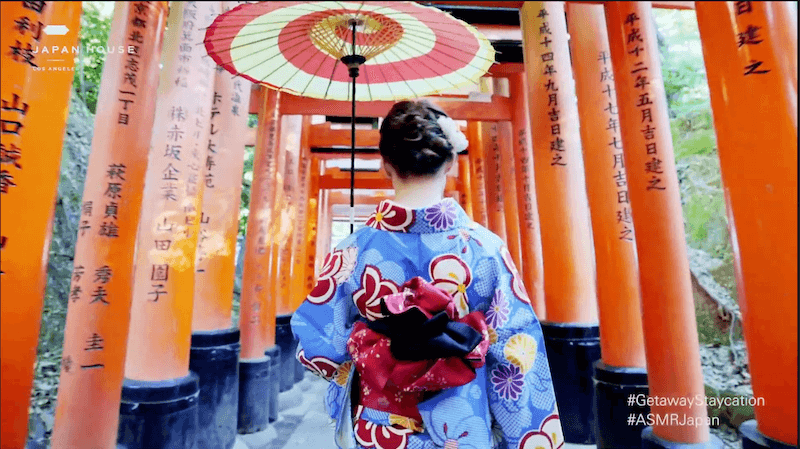
Kami
Kami are spiritual beings believed to inhabit particular places and elements of nature, such as the sea, mountains, waterfalls or trees. They can also be the spirits of historic personages who have been granted this status. Kami are believed to control nature – providing protection, fine weather and bountiful harvests or storms, earthquakes and floods – depending on how they are treated. Respecting the kami by offering them food and drink and holding festivals in their honor ensures their support, while dishonor and neglect can invite calamity. Some kami are mentioned in Japan’s oldest written texts, and for centuries many have been worshipped in shrines (Japanese: jingū, jinja). They have occasionally been given human form in sculptures and paintings, but their presence is usually suggested by images of their animal messengers. In English they can be referred to as gods or deities – for example, Inari is the god of the rice harvest (with a fox messenger), while Tenjin is the god of scholarship and academic success.

Kasuga Daimyōjin, the Kami of the Kasuga Shrine near Kōfuku Temple, No. 9 from the series Kannon Pilgrimage Record by Utagawa Kunisada II and Utagawa Hiroshige II, 1859
Kasuga is the deity worshiped at the Kasuga Great Shrine in the ancient capital of Nara. Since about the 8th century, he has been considered the protective deity of Nara and of the powerful Fujiwara clan – many of whom were members of the imperial line. He is shown here as an elderly nobleman riding a white deer looking at a nobleman in black, probably a member of the Fujiwara clan, who bows before him making an offering of what appears to be a sacred text. Even today, deer – once believed to be the sacred messengers of the deity - roam freely in and around the Kasuga Shrine grounds.

New Year's Eve Foxfires at Nettle Tree, Ōji, No. 118 from the series One Hundred Famous Views of Edo by Utagawa Hiroshige, 1857
Inari, the kami of the harvest, is rarely depicted in human form. The deity’s presence is suggested by stone sculptures of foxes, considered Inari’s messengers and protectors of the rice harvest since they catch the mice who eat the rice. Foxes (Japanese: kitsune) feature prominently in folklore, both as benign supernatural beings and as wicked, harmful creatures who bewitch and possess people – a belief originating in Chinese folklore. During the Edo period, it was thought that on New Year's Eve, foxes from all regions gathered under the Nettle Tree at Ōji. These foxes were believed to carry torches in their mouths creating kitsune-bi, or fox fires. Local farmers predicted the success of the coming year's crops by the brightness of these fires. In this print from his series, One Hundred Famous Views of Edo, Hiroshige imagines the mysterious atmosphere of a gathering of sacred foxes.

Sengen, Kami of Mount Fuji, Meiji period (1868-1912), late 19th century
This print is a relatively rare depiction of Kono-hana-sakuya-hime, the kami of Mount Fuji. Also known as Sengen, this deity has been worshipped as the protector of Japan's most sacred mountain since the Edo period. The main shrine is in the southwestern foothills of Mount Fuji but there are over 1,000 associated shrines nationwide. According to legend, Kono-hana-sakuya-hime (“Princess of the Blossoming Tree”) was the daughter of the mountain god Ōyama-tsumi and wife of the god Ninigi-no-mikoto, grandson of Amaterasu, the Sun Goddess, the most revered of all kami. Here, the deity is shown standing in front of Mount Fuji dressed like a female Imperial courtier in layered robes that spread outwards over her platform mimicking the form of the mountain. She holds a camellia branch, from which hang white paper strips used for purification. She is elegant and calm yet formidable, just like the mountain.
#ASMR Japan | Visiting a Shrine
Shinto shrines are located throughout Japan, from the busiest metropolitan cities to deep within the quietest stretches of forest, serving as a place for worship as well as dwellings for kami, the Shinto gods. Shrine visitation, or sampai, is an important facet of Japanese spiritual life, where worshippers can offer a prayer to the kami in the hopes of achieving personal desires (such as passing an exam or finding happiness), practicing traditional religious ceremonies during the New Years’ period, or finding healing and spiritual restoration in troubled times. Fushimi Inari Taisha, located in Kyoto Prefecture, is the most important shrine dedicated to Inari, the Shinto god of rice, good harvest, and success in business. As the head of all Japan’s Inari shrines, Fushimi Inari is known for its vibrant orange torii gates (Senbon Torii) that number more than a thousand, spiraling up to Mt. Inari and leading to the inner shrine.


#ASMR Japan | Takaya Shrine
Known as “the torii gates to the sky,” Takaya Shrine sits at 407 meters atop Mt. Inazumi in the city of Kanonji, Kagawa Prefecture, located in the north of Shikoku island. Takaya Shrine, believed to house a god of abundant rice harvests, offers a panoramic view of the city below and the Seto Inland Sea, making the shrine an ideal location for capturing breathtaking sights or the perfect landscape photo. To the north, Naoshima Island is the site of internationally renowned modern art pieces, such as Kusama Yayoi’s Yellow Pumpkin and Red Pumpkin, and Fujimoto Sou’s Naoshima Pavilion.

Return to Part 3
Supernature: Spiritual Forces in the Japanese Landscape

Main Exhibition & Virtual Tour

*Note: Japanese names in this exhibition are written in the traditional Japanese order, with the family name first and personal name last. However, if an artist has come to be known by a single name, (e.g., Hokusai and Kunisada) that name will be used for subsequent mentions.

